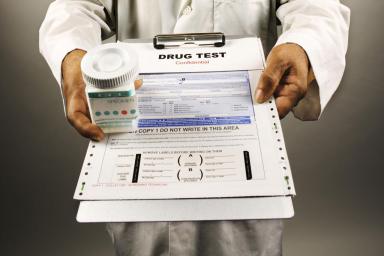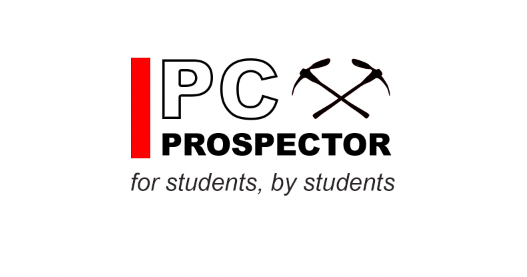Proposed Drug Testing Policy

Image Courtesy of agoodemployee.com
Devastation wracked our small town a few weeks into the school year when we lost two of our peers. After the grief and pain that followed, the district felt as though they needed to address the drug issue in Park City. The deaths were caused by a new synthetic opioid and left the community rattled. As community discussion began surrounding the drug problem, one solution emerged: High school organized random drug testing for students involved in sports and activities.
It has been weeks since the potential policy was announced, and students throughout the school have mixed emotions. Some are skeptical of the idea, while others are in favor of the proposed drug policy. Many worried that they would be caught and punished – suspensions, parent involvement, and expulsions– while others were concerned about their right to privacy.
Testing Negatives
To understand student body opinion, we sent a poll to the entire high school. Over 600 students took the simple poll. It asked: Do you agree with randomly drug testing students from PCHS? Almost 64 percent of students said they opposed the school drug testing. There were a variety of differing opinions, but overall the majority of students said we needed better drug education that would start earlier and be more consistent thourghout our school careers.
Since the current proposed drug testing plan affects only sports, clubs, and school sanctioned activities, we decided to speak with a student involved in activities, senior football player Cameron Gallagher, to get an insight of what sports teams may be thinking about the new policy. He commented on the same concerns seen in the poll:
“I understand the possible need for a drug test given the circumstances that have occurred, that’s totally justifiable; On the other side it seems very invasive from a student standpoint…I don’t partake in drugs or alcohol or anything like that so it’s just kind of like a waste of my time.”.
Within the comments from the student poll, many expressed concern over how it might affect whole teams and activities. For perspective, Gallagher commented on his experiences as an active member with the football team, stating, “I can definitely say if we were to drug test most of the athletic teams, a large portion of them wouldn’t be able to play.”.
When we discussed the need for comprehensive drug education, Gallagher agreed. He explained, “I think they need more clarity in our education and need to just better educate us when we’re younger.”
There were other student concerns. Some offered the outlook that drug testing simply covers the root issue of the problem; for many students, drugs are a chance to escape personal stressors or mental illness…
It is not solely students opposed to drug testing; many members of the school board were also in opposition. Phil Kaplan, member of the Park City School Board, expressed his concern in our interview with him. The test does not equally test for all drugs, and he worried students would choose harder drugs – like methamphetamine or heroin – that stay in the the body for a shorter time period, over lesser drugs like alcohol or marijuana that linger for weeks. Mr. Kaplan wondered, “…Are we pushing the kids to use [substances to come clean on a test] if we’re testing?”
This is a legitimate concern based on the potential test. Heroin and methamphetamine, drugs that can cause an overdose the first use, only stay in the body for three days; LSD lasts a mere 2 days. As a result, they do not always show up on a urine test. Meanwhile, less harmful drugs to student’s health like marijuana stay in the body for up to 12 weeks and are more likely to test positive on a urine test. A student who normally uses marijuana might turn to a more dangerous drug if it makes it easier for them to pass the drug test.
Testing Positives
There is also community and student support for implementing a drug testing program. While many students oppose the district’s idea, other student’s agree with the policy, as do some district officials who believe testing has merit. We sat down with PCHS Principal Bob O’Connor to discuss the proposition of drug testing and how he felt about the student responses.
One of the main fears circling around the school was about punishment for students who tested positive. Many students wonder what happens if you get caught. Does it go on school records? Would you be reported to the police? These concerns were voiced by many students in the survey.
Mr. O’Connor offered an answer to some of these questions. He explained, “It would remain consistent with the policy – the current policy – if someone gets caught during football season, basketball season, [or] baseball season in possession or under the influence at a school event it’s a five day suspension [from extracurriculars]. You have to miss two contests and have substance abuse evaluation and education. Once that’s done you can return to practice but you still have to miss two contests. Depending on the sport [or activity] it might only be one contest.” For example, an activity like Speech and Debate only has a few tournaments a year, so one tournament suspension may have the same affect as a basketball player who had to miss two games. Either way, the disciplinary action would stay within the team activity, with the addition of a traditional two day suspension from school.
Regarding the permanent records, Mr O’Connor said, “The discipline logs that we keep on kids stay here, they don’t go to a college.” At least in terms of college access, the proposed policy would have little affect on student’s college-going potential He added that they would not be shared with law enforcement.
The Validity of the Test
During the local school board meeting on October 18th, Dr. Andrew Talben spoke regarding his concerns about the specific test that the district could use. He explained, “The cheaper test, 20 [dollars] and below is a positive-negative test. That’s generally what’s called an Elisa test. In this test you are just testing for the presences of a substance. It’s either positive or it’s not positive. With these Elisa tests there is a very high false positive result.”
He further explained that a positive test would need a follow-up assessment to determine the details of the first test. Dr. Talben estimated the follow-up test would cost roughly 300 dollars.
Mr. O’Connor also addressed the false positives, although he explained that other organizations use similar tests. He said, “Yes, [false positives are] a common occurrence. Currently we offer drug testing for students at Valley Mental Health. I’m not aware of a false positive or of anybody claiming a false positive, but a lot of employers, not necessarily the school districts, if you get a positive test there’s a more efficient, effective, higher-end test you can take to rule out a false positive. Cost is going to be a huge factor.”
Many students feel as though the school isn’t listening to them. Mr. O’Connor clarified with one quick comment, “A decision hasn’t been made on whether we’re going to do it. I’d like to respect the student survey data, and try other things like education.” His comments should reassure many students that the administration is focused on listening to student views too. He also reiterated that the most important point is that students get the help they need to combat drug use through education.
Finally, we consulted Dr. Ember Conley, our superintendent, as the leader of the school district and the person overseeing the drug testing conversation. She agreed with us that we needed a better drug education, starting with younger years and continuing through older age groups,no matter if we started the drug testing or not.
“It feels like I’m moving a train by myself,” said Dr. Conley. In our school district we have to come to an agreement from everyone and listen to the student, parents, and administration to see what we could all agree on, because without agreement it is going to be an uphill battle for everyone trying to make a difference, from district administration like Dr. Conley to the students in the high school.
No matter their opinions, students should recognize that there are legitimate reasons for the views on both sides of the drug testing argument. We all can come to the agreement that something needs to change for the better. At the end of the day we do not want anyone to put themselves in danger from a preventable choice.
Remeber to listen to everyone’s view and look at the pros and cons of each. Listen to the students who want their voices to matter, listen to the parents who are worried about their kids, and listen to the administration who bears the heavy weight of responsibility. All community members must work together to tackle a world where drugs exist. Drug testing won’t erase the teenage overdose death nor will it negate the ability to do drugs. We need to ackowledge that there is a problem and come together to figure out a solution to stop tragedy from happening again.
Finally a reminder for the students of PCHS: if you are having trouble with drug use or addiction and you need to talk to someone about it, you can meet with Mrs. Walsh, our school crisis counselors. She will help address drug use or addiction. There is also the SAFE UT phone app, available for iOS or Android, for handling drug crises and intervention if you are in need. We are lucky to have her and soon we will have the help of another crisis counselor. You can also meet with your family doctor or pediatrician.
We can all agree that we need to find a solution, whether that be with education, with drug testing, or a combination of the two.





